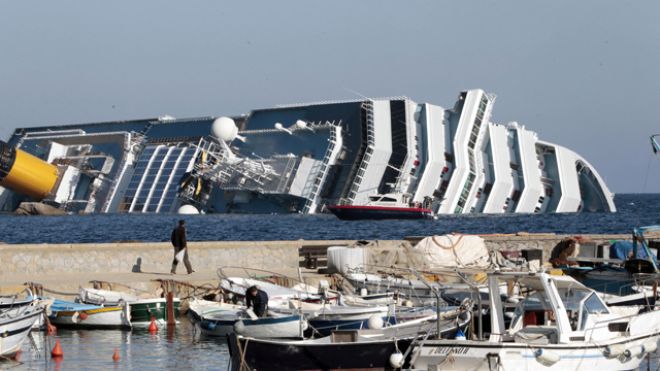By now, you have probably heard about the tragic accident that took place on Friday, January 13, 2012. The Carnival Cruise Ship Costa Concordia ran aground just off the tiny Tuscan island of Giglio, Italy. The massive ship then capsized, killing 11 people (that they know of at the time of writing this) and injuring many more. The resulting chaos caused by this horrific accident was compounded by the outrageous lack of leadership demonstrated by the ship’s captain, Francesco Schettino.

While I don’t know all of the details that led to capsizing the ship, I do know that what happened following the accident is a powerful case study in the need for leadership during times of crisis. Here are three initial observations:
1. You can’t be a leader if you don’t take responsibility.
This is the biggest lesson from the entire ordeal. Believe it or not, Captain Schettino abandoned ship with people still on board. A report by the Associated Press shares what a blatant disregard to leadership this was.
Michael Murphy, national vice president of government relations for the largest union of merchant marines officers in the United States, said Schettino should never have fled the Costa Concordia after it capsized.
“I consider that to be a mortal sin,” Murphy said. “He’s responsible, that’s his ship. He’s responsible for the ship and all that’s in it. As far as I’m concerned, I have sympathy for him running aground — that’s heart-wrenching — but leaving his ship and his crew and his passengers, is unforgivable.”
It cannot be emphasized enough: leadership begins when one takes responsibility, both for oneself and for others. Schettino got into a lifeboat while people were scrambling around the innards of the ship trying to find a way out. He was no longer “Captain” the minute he left the boat.
2. Your example is influential.
If you read the transcript of the conversation between Schettino and Capt. Gregorio De Falco of the Italian coast guard you’ll notice something else quite startling – Schettino’s second in command is in another lifeboat.
—De Falco: “And so what? You want go home, Schettino? It is dark and you want to go home? Get on that prow of the boat using the pilot ladder and tell me what can be done, how many people there are and what their needs are. Now!”
—Schettino: “…I am with my second in command.”
—De Falco: “So both of you go up then … You and your second go on board now. Is that clear?”
In the end, people do what people see. The second-in-command of the ship followed the example of his leader…he got in a lifeboat. Not only did Schettino fail to lead, he failed to empower those closest to him to lead.
3. Somewhere in this crisis, a leader emerged.
Here’s the one thing I haven’t heard anyone talking about yet. There were over 4200 people aboard that ship. In the midst of the disembarking process that occurred on a ship that was turned onto its side, there had to be some people who stepped up. In the leadership vacuum created by the ship’s captain, there were plenty of opportunities for others to fill the need for leadership. There were, perhaps, countless crew members who took it upon themselves to ensure the safe removal of passengers from the ship. There were, perhaps, many passengers who sacrificially took it upon themselves to help those in need make their way to dry ground. In this instance, I hope that we’ll begin to hear the stories of the heroes who led others through their selfless example and personal sense of responsibility. (See: When Will The Leader Emerge?)
Share this Post
